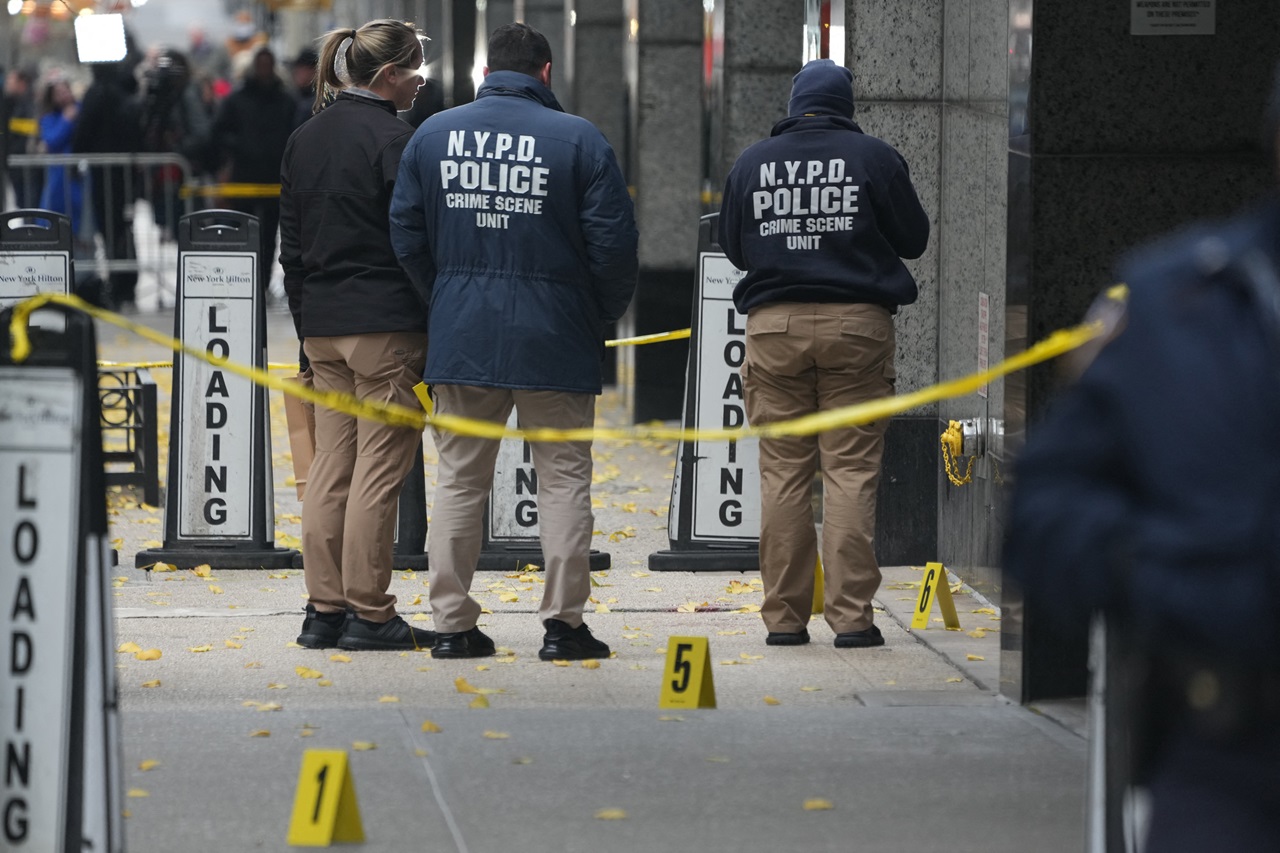
Deported, When immigrants are just a number
A year after Donald Trump’s inauguration, we inquired into the true figures of deportations caused by the policies of his new administration.
A year ago, the United States was still in shock while absorbing its new political reality.
The most unlikely candidate had won the key to the White House after a campaign based on division, racism and the promise of a nationalist resurgence in the communities that felt relegated by previous administrations.
Many blamed this on the two periods of Barack Obama's government; on the liberalism established in the national economy, and on the resentment accumulated for years in the less educated white population.
But for the Latino community, the danger was imminent: a border wall, the promise that the country would "return to the hands of the true Americans", and the constant threat to immigration programs seemed to mean that the Donald Trump government was serious when calling the Latino a "bad hombre".
The campaign’s rhetoric convinced many others that the cause of unemployment, violence and the economic recession was the high rate of immigration, characterizing the Hispanic and immigrant man as a national enemy.
During his speeches, Trump said that the first problem was of a border nature when he said that "we have left our borders wide open so that anyone can enter, and so that drugs flow to unprecedented levels."
Thus the candidate guaranteed the construction of his longed-for border wall arguing that "will be a very effective weapon against drugs and crime."
Gang members, traffickers, and undocumented immigrants were the archenemies of the nation, according to Trump, and they would also be his first targets during his administration.
National media began reporting an increase in anti-immigrant rhetoric within the communities, which echoed the aggressive and violent campaign of the now-president.
His first measures were applied immediately as soon as the month of February 2017 began, as reported by the Immigration and Customs Office (ICE), who had just begun a series of nationwide raids to arrest about 680 people who had previous convictions for violations of the law, as the then Secretary of Homeland Security, John Kelly, said.
The sentences "included, but were not limited to, homicides, aggravated sexual abuse, sexual assault of minors, lewd acts with minors, indecent liberties with a minor, drug trafficking, violence, assault, DUI charges or charges for carrying weapons."
While ICE did not specify at that time whether the nature of that 75% of arrests covered the entire spectrum of criminality, several activist groups denounced the scale and timing of raids that included "collateral damage" such as arbitrary detention and profiling in the streets of cities.
And is that the presidential executive order for the deportation of "criminal immigrants" allowed the deportation of individuals "under any charge."
During these 12 months, AL DÍA has been following closely deportation cases that demonstrate a radical change in the new immigration policies of the White House, where families have been separated and threatened by charges as simple as traffic tickets or even for no reason at all.
Such were the cases of Guadalupe García de Rayos, Armando Páez; Rafael, Sonia and their daughter with cerebral palsy, Liliana Cruz, and even Ramón Ruiz Ortiz, whose community openly supported Trump during the presidential elections.
All of them shared a similar background: they had come to the country a long time ago, they had created a home, they worked, they paid taxes and they had not committed any crime.
But for the president, his promises and ideology always go first.
One year after his inauguration, Trump has fulfilled almost all of his promises: he has placed the financing of his wall as a fundamental bargaining chip in all his legislative projects, he has increased the funding of immigration enforcement, has increased the raids and the detention of immigrants without a criminal record, has tried to cancel the financing to the sanctuary cities, tried to block the flow of Muslim citizens to the country, has tried to suspend the immigration of countries mined by terrorist groups and therefore of refugees, has terminated the Temporary Protection (TPS) for Central American countries and has temporarily suspended the program for young people who arrived in childhood (DACA).
But what are the actual deportation figures?
According to the Immigration and Customs Enforcement (ICE) on its web portal, 2017 "has been a successful year in border security efforts, reducing illegal cross-border migration, increasing interior enforcement, and dismantling transnational criminal enterprises."
In the same way, the office explains in its fiscal year report that all its measures have been applied in accordance with the Presidential Executive Order signed on January 25, 2017, and that its strategies contain "the arrest of removable aliens who have been convicted of any criminal offense, have been charged with any criminal offense that has not been resolved; have committed acts which constitute a chargeable criminal offense; have engaged in fraud or willful misrepresentation in connection with any official matter before a governmental agency; have abused any program related to receipt of public benefits; are subject to a final order of removal but have not complied with their legal obligation to depart the United States; or in the judgment of an immigration officer, otherwise pose a risk to public safety or national security."
This type of operation is carried out by the ICE dependent agency called "Execution and Removal Operations" (ERO), and includes several types of arrests:
1. Administrative Arrests
The arrest of immigrant citizens for a civil violation of immigration laws. During the year 2017, ICE "registered its highest rate of administrative arrests", compared to the previous three fiscal years.

2. Administrative Arrests for criminal conviction
They contemplate the arrest of foreigners with known criminal convictions. During the year 2017, ERO arrested 105,736 people, which represents an increase of 12% with respect to the fiscal year 2016.

RELATED CONTENT
3. Administrative without criminal charges
They consist of the arrest of immigrants who were not committing a crime at the time of their arrest. During the year 2017, this type of detention represented 26% of the total number of ICE arrests. Of those arrests, 59% had some type of unresolved criminal charge, but the other 41% contemplated undocumented individuals, previously deported or simply people who had not committed any crime.

4. General arrests
Carried out within the community, outside a prison and in areas that limit access to ICE. During the year 2017, this type of arrests reached 40,066, unlike the fiscal year 2016 where 30,348 arrests were made.

However, detention rates do not directly correspond to the numbers of persons deported during the first year of the Trump Administration. The deportations are carried out in various circumstances that include border detentions and detentions within the territory.
During the year 2017, ICE has reported an increase in deportations for arrests carried out within the territory, compared to the fiscal year 2016 during the Obama administration.

Although several national media have reported that the rates of deportation during the first year of Trump's government are considerably lower than those registered during the last two years of Barack Obama's administration, this is due to the fact that border arrests have significantly decreased.

During the eight years preceding Donald Trump, President Obama was known as "the deporter-in-chief", the man who had been responsible for leaving a legacy of "unnecessary deportation" as claimed by the National Council of La Raza in 2014, when more than 2 million deportations had been registered.
Why is the response against Trump so aggressive during his first year then?
The answer is simple: Trump can now be called "the harasser-in-chief," because his measures are not based only on the reinforcement of the ICE forces, but on the persecution of immigrants, their stigmatization and mechanisms of terror that force people to think twice before crossing the border.
This was confirmed by a report in The Associated Press published in December, which compared the numbers of arrests on the border with those made in the interior, and attributed that difference to the fact that fewer people now decide to emigrate to the United States thanks to the violent and threatening rhetoric of this administration.
"Potential immigrants have realized that the United States is not exactly hanging a 'welcome' sign," said Michelle Mittelstadt of the Migration Policy Institute. "I think now there is a feeling that the United States is less welcoming."
So, if we consider these figures, maybe the president won’t need his wall, after all.











LEAVE A COMMENT:
Join the discussion! Leave a comment.